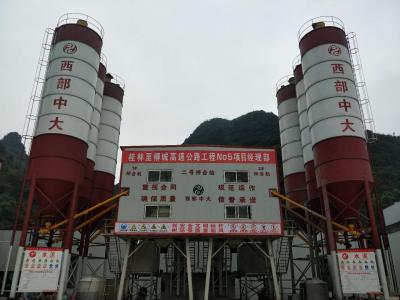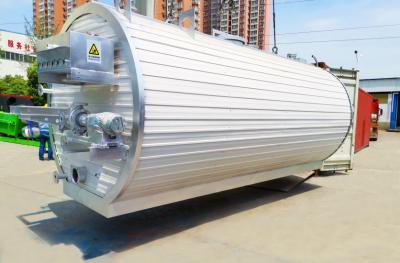Definition and Determination of Concrete Strength
Definition and Determination of Concrete Strength
The strength of concrete is a fundamental guarantee of the structural safety of building products, and is a constant issue for those working in building construction. Concrete has a high compressive strength (the tensile strength is relatively low) and therefore the compressive strength is the main indicator for controlling and assessing the quality of concrete during construction. According to the Code of Practice for the Design of Concrete Structures (GB50010-2010), "the strength grade of concrete shall be determined by the standard value of the compressive strength of the cube. The standard value of cube compressive strength refers to the compressive strength with 95% guarantee measured by standard test methods at the age of 28d for a cube specimen with a side length of 150mm produced and maintained in accordance with standard practice". The strength of concrete in general architectural drawing design refers to the above definition.
The concrete strength of a component and the concrete strength grade are two different concepts
The concrete strength of a component shall mean the representative strength of the concrete as a solid component of the building on site, after it has been formed and maintained on site. The strength shall be lower than the standard value of the cubic compressive strength (standardised test block strength), depending on the method of placing, the manner of curing, environmental conditions, etc. The standard value of the cube compressive strength determines the strength grade of the concrete as a raw material, while the standard value of the concrete axial compressive strength and the design value used in the design and construction calculations are the values used for the strength of the concrete elements. Therefore, there is no concept of design values for cubic compressive strength in the relevant codes.
In the actual bearing of the component, its concrete bearing capacity has the following two main influencing factors: the concrete strength of the component and the size of the component. The former influence factor is relatively easy to understand, the latter influence factor construction personnel consider less, can do the following simple understanding: 100mm concrete cube test strength to be greater than 150mm concrete cube test strength; the same cut-off interview block, the greater its height, the lower the value of the damage load.
The minimum limit for determining the strength of a component concrete
Therefore, in the new version of the "Code of Construction Quality Acceptance of Concrete Structures" (GB50204-2015), in addition to retaining the test requirements for standardized specimens, the content of the structural solid inspection of concrete strength has been increased. The former can monitor the selection of concrete, the latter can monitor the strength effect of concrete after pouring.
The Code of Construction Quality Acceptance for Concrete Structures provides for the following structural strength inspection: "The inspection of the strength of concrete shall be based on the strength of specimens prepared at the place of concrete placement and maintained under the same conditions as the structural entity. The representative value of the strength of the specimens cured under the same conditions shall be determined according to the strength test results in accordance with the provisions of the current national standard "Concrete Strength Test and Evaluation Standard GBJ107, multiplied by the conversion factor; the conversion factor shall be taken as 1.10, which may also be appropriately adjusted according to the local test statistics."
The 1.10 coefficient recommended in the Code of Construction Quality Acceptance for Concrete Structures is precisely the inverse of the correction factor of 0.88 for concrete strength of specimens in the Code for the Design of Concrete Structures.
In both codes it is acknowledged that the strength of the component concrete is to be lower than the strength of the specimen specimen, therefore the minimum limit for determining whether the strength of the component concrete is satisfactory shall be 88% of the cubic compressive strength value represented by the design concrete strength class. The rebound method of testing the compressive strength of concrete, as a complementary method to the physical inspection, determines the strength of the physical component. The main principle on which it is based is the correspondence between the surface hardness of the concrete and the strength of the concrete. Based on the rebound values, the strength curve is checked to determine the representative strength values and various corrections are made for the depth of concrete carbonation, pumped concrete, etc. The correspondence curve is based on a large number of test data and is a plot of the rebound values against the concrete strength of the component.
In the Technical Regulations for Testing the Compressive Strength of Concrete by the Rebound Method, there is also the following statement: "In general, the strength of a structure or member is lower than the strength of a specimen in the same condition due to fabrication, maintenance, etc. The presumed strength value is defined in these Regulations as the strength value of the structure or member itself, but in practice, this value is mostly incorrectly compared with the strength of a standard cured 150mm cube specimen, resulting in the impression that the strength value tested by the rebound method is low" and "The test result is the strength of the concrete of the member, which is different from the strength of the standard cured or cured specimen under the same conditions. There are differences between the strength of the concrete and that of the standard curing or curing specimens under the same conditions, so that no conclusion can be drawn as to whether the design strength level of the component is acceptable or not based on the results". In summary, it can be concluded that the strength values of the standard specimen, the conditioned specimen and the field solid are in decreasing order.
If you want to increase the monitoring of the physical concrete strength of the elements by rebound testing (easy to operate), it is recommended that a site specific strength graph be developed in conjunction with the core drilling method, which can greatly improve the accuracy and credibility of rebound testing.
For the determination and monitoring of the strength of concrete on construction sites, real and reliable conclusions can only be obtained if the strength is clearly defined, the criteria for determination, the target objects are distinguished, reasonable testing methods are chosen and the various influencing factors are correctly analysed.



